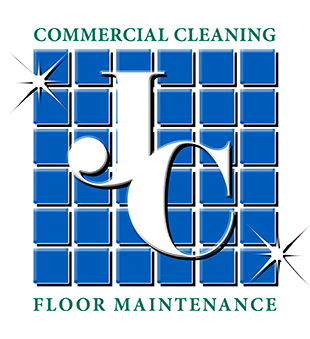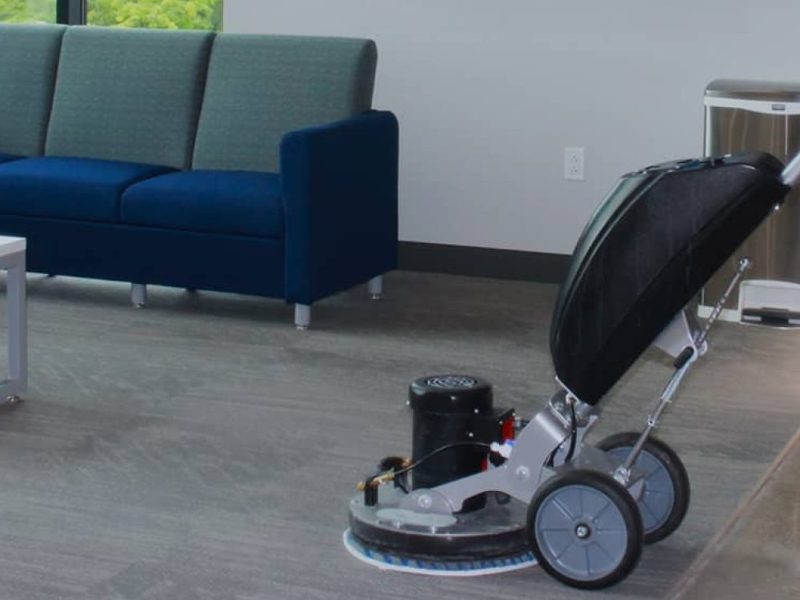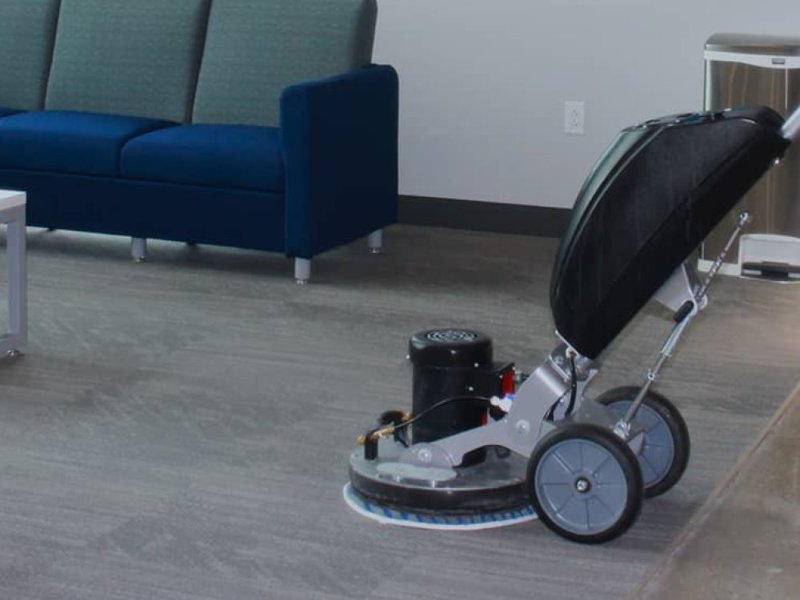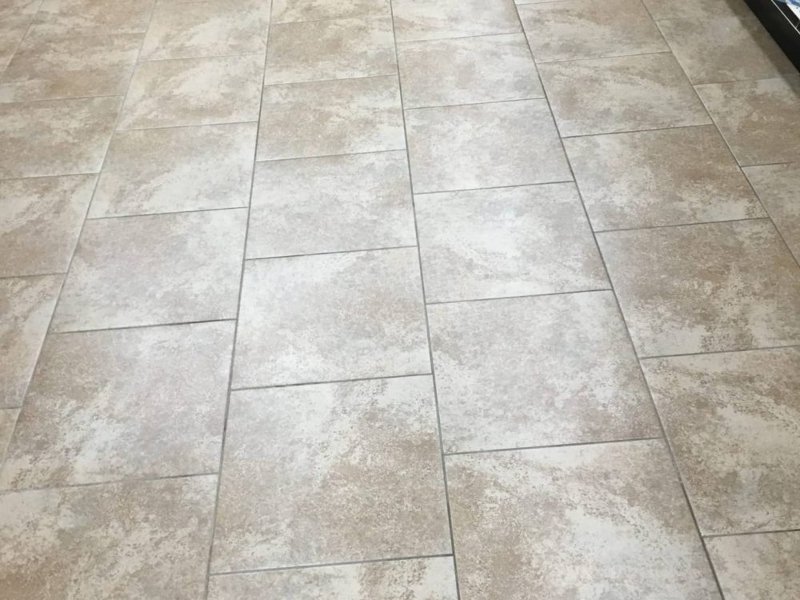Janitorial cleaning is critical to maintaining a clean, healthy, and welcoming environment in any commercial or public space. Whether it’s an office, school, hospital, or retail store, the cleanliness of these spaces directly impacts the well-being of their occupants and the perception of the facility. This guide provides tips and best practices for effective janitorial cleaning, ensuring your facility is maintained to the highest standards.
Importance of Janitorial Cleaning
Maintaining the cleanliness of your workspace is very important. With the help of our friends at Maintenance One, we have come up with several reasons why janitorial cleaning is essential.
1. Health and Safety
A clean environment reduces the spread of germs and bacteria, which can cause illness. Regular janitorial cleaning helps prevent the buildup of dust, mold, and allergens, improving indoor air quality and promoting the health and safety of occupants.
2. Professional Appearance
First impressions matter. A clean and well-maintained facility reflects professionalism and care, enhancing the reputation of your business or institution. It shows that you prioritize the comfort and well-being of employees, customers, and visitors.
3. Prolonging Facility Lifespan
Regular cleaning and maintenance help preserve the condition of a facility’s infrastructure and furnishings, reducing wear and tear and prolonging their lifespan. This can save money on repairs and replacements in the long run.
4. Compliance with Regulations
Many industries have specific cleanliness and hygiene standards that must be met. Regular janitorial cleaning ensures compliance with these regulations, avoiding potential fines and legal issues.
Best Practices for Janitorial Cleaning
1. Develop a Cleaning Plan
A well-structured cleaning plan is the foundation of effective janitorial services. This plan should include:
- Frequency of Cleaning Tasks: Determine how often different areas and tasks need to be cleaned. High-traffic areas may require daily attention, while other areas might need weekly or monthly cleaning.
- Task List: Create a detailed list of cleaning tasks for each area, including dusting, vacuuming, mopping, disinfecting surfaces, and emptying trash.
- Assignment of Responsibilities: Assign specific tasks to janitorial staff to ensure accountability and efficiency.
2. Use the Right Tools and Supplies
Using the right cleaning tools and supplies is essential for achieving optimal results. This includes:
- Cleaning Agents: Choose appropriate cleaning agents for different surfaces and tasks. For example, use disinfectants for high-touch areas, glass cleaners for windows, and specialized products for floors.
- Equipment: Invest in high-quality cleaning equipment such as vacuum cleaners, mops, brooms, and microfiber cloths. Ensure equipment is regularly maintained and replaced when necessary.
- Personal Protective Equipment (PPE): Provide janitorial staff with appropriate PPE, such as gloves, masks, and safety goggles, to protect them from exposure to cleaning chemicals and contaminants.
3. Follow Standard Operating Procedures (SOPs)
Standard Operating Procedures (SOPs) ensure consistency and quality in janitorial cleaning. SOPs should cover:
- Cleaning Techniques: Outline the proper techniques for different cleaning tasks to ensure thorough and effective cleaning. For example, use a top-to-bottom approach for dusting and a systematic pattern for mopping floors.
- Safety Protocols: Include safety protocols for handling cleaning chemicals, using equipment, and disposing of waste. Ensure staff are trained in these protocols to prevent accidents and injuries.
- Inspection and Quality Control: Implement a system for inspecting and evaluating the quality of cleaning. Regular inspections help identify areas for improvement and ensure adherence to standards.
4. Focus on High-Touch Areas
High-touch areas are surfaces that are frequently touched by multiple people, such as door handles, light switches, elevator buttons, and restroom fixtures. These areas are prone to harboring germs and bacteria. Prioritize the cleaning and disinfecting of high-touch areas to reduce the spread of infections.
5. Implement Green Cleaning Practices
Green cleaning practices promote sustainability and reduce the environmental impact of cleaning operations. Consider the following:
- Eco-Friendly Cleaning Products: Use environmentally friendly cleaning products that are free from harsh chemicals and biodegradable.
- Energy and Water Conservation: Implement practices that conserve energy and water, such as using energy-efficient equipment and optimizing water use during cleaning.
- Waste Reduction and Recycling: Promote recycling and proper waste disposal to minimize waste and support environmental sustainability.
6. Train and Empower Janitorial Staff
Well-trained janitorial staff are crucial for maintaining high cleaning standards. Provide comprehensive training that covers:
- Cleaning Techniques and Procedures: Ensure staff are proficient in using cleaning equipment and products and understand the correct techniques for different tasks.
- Safety and Health Protocols: Train staff on the importance of PPE, safe handling of chemicals, and injury prevention.
- Customer Service: Encourage staff to maintain a professional and courteous demeanor when interacting with facility occupants.
7. Use Technology to Enhance Cleaning
Technology can enhance the efficiency and effectiveness of janitorial cleaning. Consider implementing:
- Automated Cleaning Equipment: Utilize automated equipment such as robotic vacuums and floor scrubbers to streamline cleaning tasks.
- Cleaning Management Software: Use software to schedule and track cleaning tasks, manage inventory, and monitor performance.
- Data Analytics: Analyze data from cleaning operations to identify trends, optimize processes, and improve overall performance.
8. Regular Maintenance of Cleaning Equipment
Proper maintenance of cleaning equipment is essential for ensuring its longevity and performance. Establish a routine maintenance schedule that includes:
- Inspection: Regularly inspect equipment for wear and tear, damage, and functionality issues.
- Cleaning: Clean equipment after each use to prevent the buildup of dirt and debris.
- Repairs and Replacements: Promptly address any repair needs and replace equipment as necessary to avoid disruptions in cleaning operations.
9. Adapt to Seasonal Cleaning Needs
Different seasons bring unique cleaning challenges. Adapt your cleaning plan to address seasonal needs:
- Spring: Focus on deep cleaning tasks such as carpet cleaning, window washing, and removing accumulated dirt and grime from winter.
- Summer: Address increased foot traffic and outdoor activities by cleaning entrance areas, restrooms, and outdoor spaces more frequently.
- Fall: Prepare for colder weather by cleaning HVAC systems, ensuring proper insulation, and addressing potential mold and mildew growth.
- Winter: Manage snow and ice removal, increase cleaning of entryways to prevent slip hazards, and maintain indoor air quality during heating season.
10. Evaluate and Improve
Continuous improvement is key to maintaining high standards in janitorial cleaning. Regularly evaluate your cleaning processes and seek feedback from staff and facility occupants. Use this information to make informed decisions and implement improvements.
Conclusion
Effective janitorial cleaning is essential for creating a clean, healthy, and welcoming environment in any commercial or public space. By following these tips and best practices, you can ensure that your facility is maintained to the highest standards. Develop a comprehensive cleaning plan, use the right tools and supplies, follow standard operating procedures, focus on high-touch areas, implement green cleaning practices, train and empower your staff, utilize technology, maintain equipment, adapt to seasonal needs, and continuously evaluate and improve your processes. With these strategies in place, you can achieve and sustain a pristine and professional environment that enhances the well-being and satisfaction of everyone







